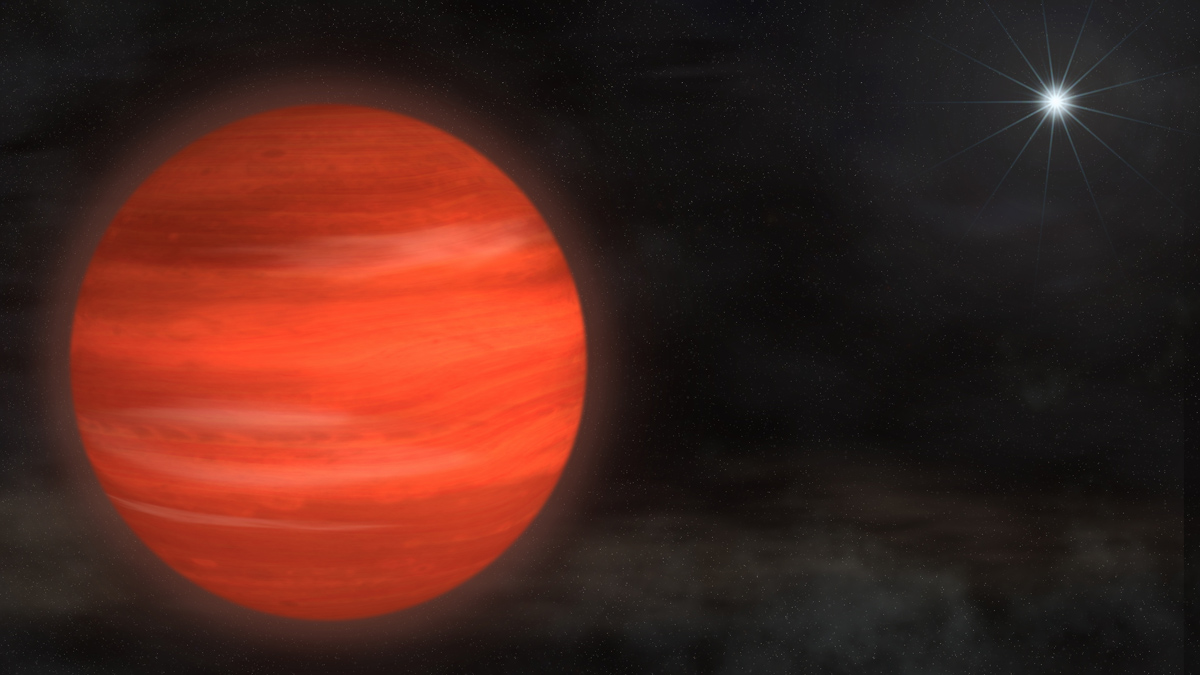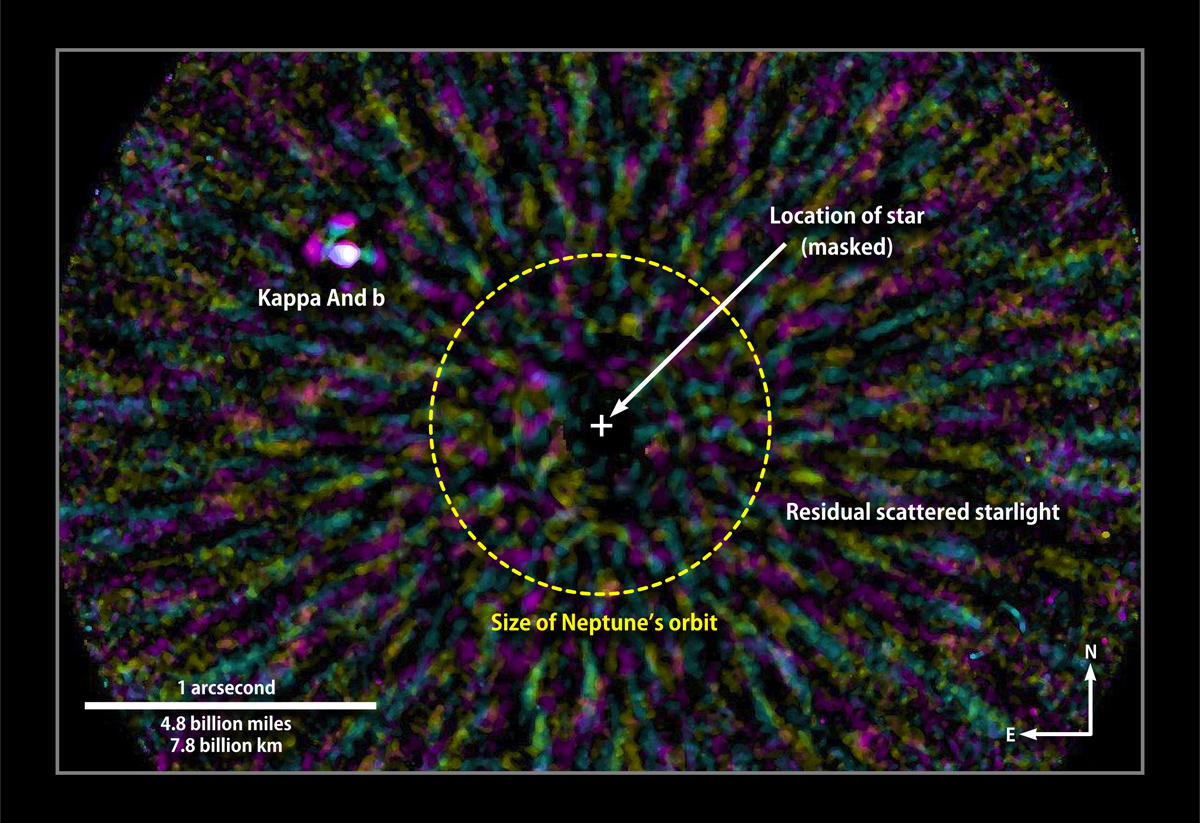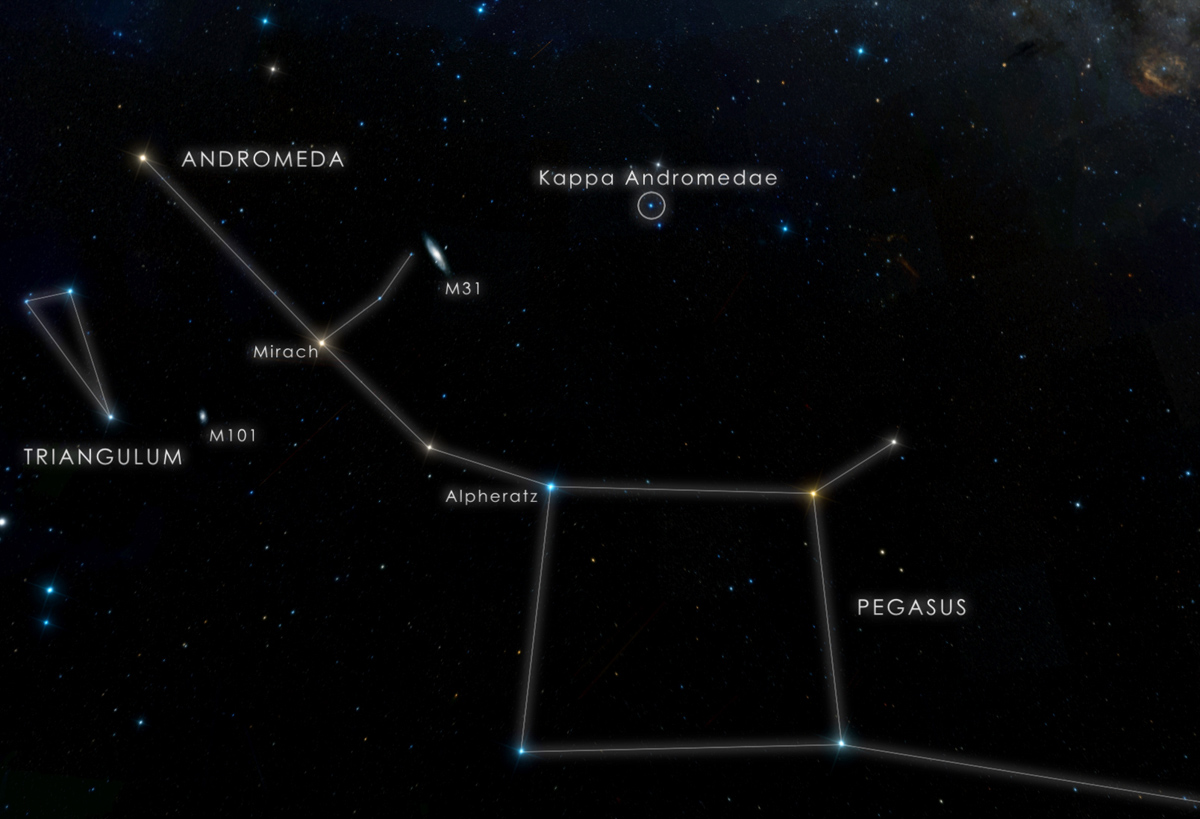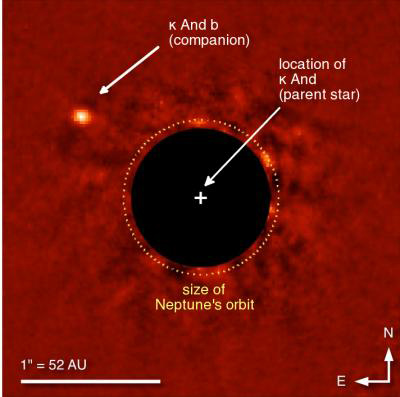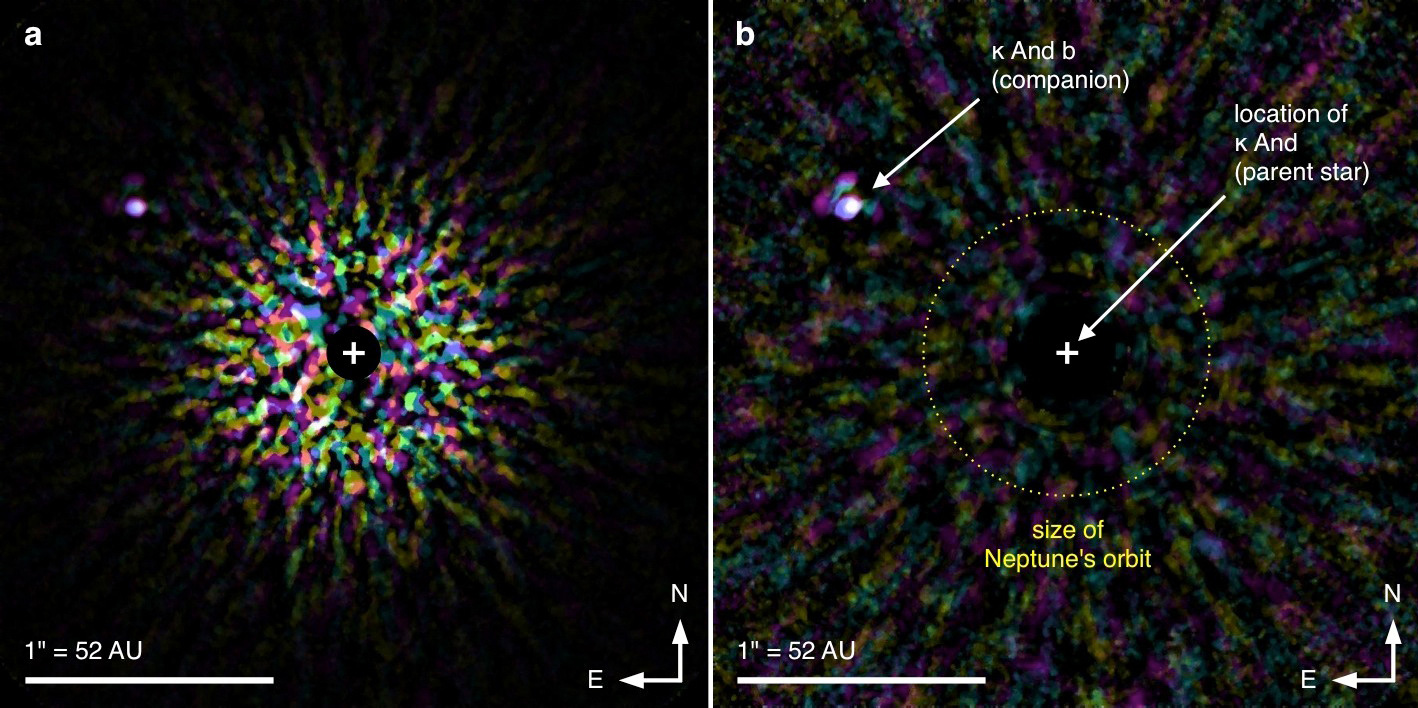Giant Super-Jupiter Planet Discovered (Photos)
Kappa Andromedae b Artist's Rendering
The "super-Jupiter" Kappa Andromedae b, shown here in an artist's rendering, circles its star at nearly twice the distance that Neptune orbits the sun. With a mass about 13 times Jupiter's, the object glows with a reddish color.
False-Color Near-Infrared Image of Kappa Andromedae
This false-color near-infrared image has been processed to remove most of the scattered light from the star Kappa Andromedae (masked out at center). The "super-Jupiter" companion, Kappa Andromedae b (upper left), lies at a projected distance of about 55 times the average distance between Earth and the sun and about 1.8 times farther than Neptune, whose orbit is shown for comparison (dashed circle). The white region marking the companion indicates a signal present in all near-infrared wavelengths, while colored blobs represent residual noise. The Subaru Telescope in Hawaii captured the image in July.
Kappa Andromedae Star Chart
This chart locates the star Kappa Andromedae, which is visible to the unaided eye from suburban skies.
Super-Jupiter Kappa Andromedae
This is a false color, near-infrared (3.8 micron) image of the Kappa And system. The light from the host star (center) has been removed through image processing. The super-Jupiter, Kappa And b (upper left), has a projected separation of 55 Astronomical Units, about 1.8 times that of Neptune's orbital separation. The speckled pattern surrounding the software-generated mask at the center represents residual noise from the starlight subtraction. The Subaru Telescope in Hawaii captured the image in July 2012.
Super Jupiter Alien Planet
False color, near infrared image of the Kappa Andromedae star system as seen by the Subaru Telescope in Hawai'i. Almost all of the light of the host star, on which the image is centered, has been removed through image processing. A Super-Jupiter planet is clearly visible to the upper left.
Kappa Andromedae System
Left (a): A false-color, near-infrared (1.2 - 2.4 microns) image of the Kappa And system. Image processing removed the light from the host star, which lies behind the mask (a software-generated, dark disk) at the center of the square. The colored speckles represent starlight left over after removal of light from the host star. Separated by about 55 Astronomical Units from its host star, the super-Jupiter, Kappa And b (upper left), resides at a distance about 1.8 times greater than Neptune's orbital separation from the Sun. Right (b): A "signal-to-noise ratio map" generated from the image to the left. The colored speckles represent residual light that remains after subtraction of light from the host star. The white feature toward the upper left, representing a high signal-to-noise value, indicates detection of the super-Jupiter with high confidence.
Breaking space news, the latest updates on rocket launches, skywatching events and more!

Space.com is the premier source of space exploration, innovation and astronomy news, chronicling (and celebrating) humanity's ongoing expansion across the final frontier. Originally founded in 1999, Space.com is, and always has been, the passion of writers and editors who are space fans and also trained journalists. Our current news team consists of Editor-in-Chief Tariq Malik; Editor Hanneke Weitering, Senior Space Writer Mike Wall; Senior Writer Meghan Bartels; Senior Writer Chelsea Gohd, Senior Writer Tereza Pultarova and Staff Writer Alexander Cox, focusing on e-commerce. Senior Producer Steve Spaleta oversees our space videos, with Diana Whitcroft as our Social Media Editor.
